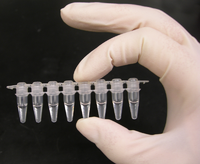
Photo from wikipedia
Abstract The hydroisomerization of n-hexadecane (n-C16) was tested by using two sets of bifunctional catalytic systems. In the first series, the activity of Pt and Ni catalysts supported on AlSBA-15… Click to show full abstract
Abstract The hydroisomerization of n-hexadecane (n-C16) was tested by using two sets of bifunctional catalytic systems. In the first series, the activity of Pt and Ni catalysts supported on AlSBA-15 with reference to the catalysts prepared with commercial SiO2Al2O3 is compared. The use of AlSBA-15 as a support yielded the Pt and Ni catalysts of an activity allowing n-C16 conversion at temperature lower by 50 °C as compared to the SiO2Al2O3 supported counterparts. The highly active Pt/AlSBA-15 catalyst provides the maximum selectivity to i-C16 amounting to 86.3% at 59% of n-C16 conversion. In the second series, n-C16 hydroisomerization has been investigated using the composite catalytic system consisting of Pt/AlSBA-15 as the main component and 25 wt% of Pt/ZSM-22 as the co-catalyst. As a result, a significantly improved selectivity towards the most desired products of mono-branched isomers (i.e. 67%) with the highest contribution 2- and 3-methylpentadecanes could be achieved under mild reaction conditions.
Journal Title: Fuel
Year Published: 2020
Link to full text (if available)
Share on Social Media: Sign Up to like & get
recommendations!